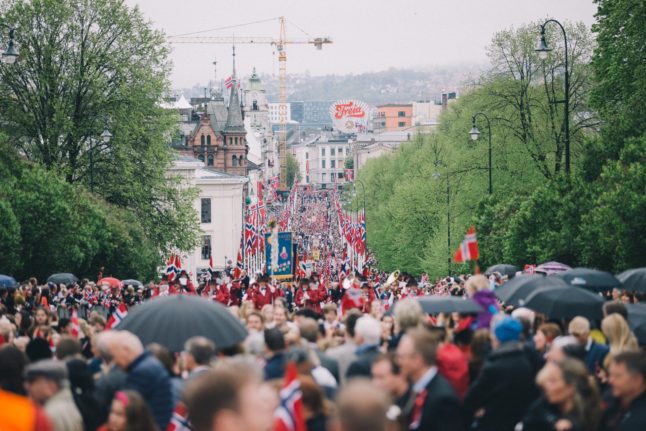What is May 17th?
“Syttende Mai”, as it’s known in Norwegian, is Norway’s national day and marks the signing of the constitution on the same day in 1814, which declared Norway an independent nation.
How is it celebrated?
For many, it begins with a large breakfast with friends or family. The breakfast is a typically Norwegian one, consisting of bread, rolls, spreads (or pælegg), and baked goods.
Breakfast begins typically quite early, and it won’t be uncommon for the meal to be accompanied by champagne.
The day is celebrated in pretty the same way everywhere across the country.
The main feature of the day is marching bands and children’s parades through the town, city or village centre.
These haven’t been as prominent in recent years due to the pandemic. However, you can expect a return to form this year as a record number of kids have signed up to take place in the children’s parade in Oslo this year.
The parade in Oslo is the most iconic. Children parade up to the palace and wave at the royal family.
The kids’ parade is followed by a worker’s one and then a russetog, consisting of final year high-school students who have spent the last month or so partying.
People will then either eat out, grill at home, or have family dinners.
What’s with the costumes?
If you have spent any time in Norway, it is almost without doubt that you will have seen or at least heard of a bunad.
The origins of the bunad has its roots in the period of national romanticism in Norway in the 19th century. This period led to an interest in traditional folk costumes in Norway and countries such as Germany.
Folk costumes were worn in Norway a long time before the period of national romanticism, however. For example, in Setesdal, southern Norway, a tradition of folk costumes stretches back to the 14th century.
READ MORE: What you need to know about Norway’s national costume
Do I have to wear a bunad?
Not if you don’t want to. Which, to some, will be a relief as they are incredibly expensive.
Although, you will be expected to dress smartly if you have been invited for breakfast, unless stated otherwise.
A smart pair of trousers and shirt for men is recommended at a minimum if attending an event. Local men who don’t have a bunad may opt for a full suit and tie.
Women are also expected to dress up for the occasion.
What else do I need to know?
If you are visiting Norway, you may find it hard to find a place to eat as many restaurants will either be closed or fully booked for a special May 17th menu.
Also, getting about may be a bit of a hassle as roads will be closed for parades. In Oslo, people are being asked to avoid the National theatre T-bane stop.
As it’s a public holiday, supermarkets, shops and state-owned wine monopolies will be shut. On the plus side, that also likely means that you’ll have a day off work too.
Flag-waving is a big tradition, but there are a few general rules. If you hoist a Norwegian flag on May 17th, it will need to be taken down by 9pm.
Additionally, if waving a small flag, you shouldn’t point the flag toward the ground because it is rude.
And finally, while the celebrations may be strange for an outsider, Norwegians are very proud of the day and its traditions. To avoid making any potential social faux pas, you should avoid poking fun at some of the traditions.



 Please whitelist us to continue reading.
Please whitelist us to continue reading.
Member comments